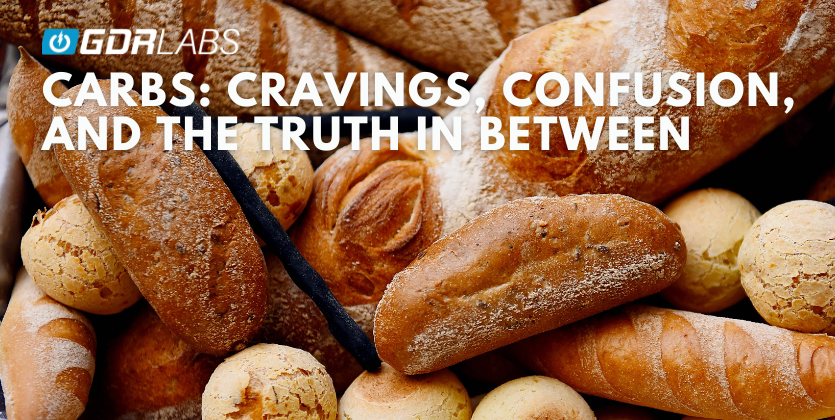Fats: Friend, Foe, or Fuel? Understanding the Truth About Dietary Fat and Heart Health

Fat was painted as the dietary villain for decades- the root of heart disease, weight gain, and sluggish health. Low-fat products lined grocery store shelves, and cholesterol became a feared word. But science has evolved, and today we understand that fat is not the enemy; it’s essential.
In this edition of Demystifying Macros, Micronutrients, and Supplementation, we’re diving deep into dietary fats- unpacking the differences between saturated, unsaturated, and essential fatty acids, and setting the record straight on cholesterol and cardiovascular health.
What Is Fat?
Fat (lipid) is one of the three primary macronutrients, alongside protein and carbohydrates. It plays a critical role in:
• Hormone production (including testosterone and estrogen)
• Brain health and nerve function
• Vitamin absorption (A, D, E, K are fat-soluble)
• Cell membrane structure
• Energy storage and metabolism
Each gram of fat contains 9 calories, making it the most calorie-dense macronutrient, but also one of the most metabolically valuable when consumed in balance.
Types of Fat: The Good, the Bad, and the Essential
Unsaturated Fats (The “Good” Fats)
Monounsaturated (MUFA) and polyunsaturated fats (PUFA) are typically liquid at room temperature and are associated with various health benefits.
Monounsaturated Fats (MUFA)
Sources: olive oil, avocados, nuts, seeds
• May help reduce LDL ("bad") cholesterol
• Associated with reduced risk of heart disease
Polyunsaturated Fats (PUFA)
Sources: fatty fish, flaxseeds, walnuts, sunflower oil
• Include essential omega-3 and omega-6 fatty acids
• Crucial for brain development, inflammation regulation, and heart health
• Omega-3s (EPA and DHA) in particular are linked to reduced triglycerides and improved vascular function[1]
Saturated Fats (Controversial but Not a Villain)
Sources: red meat, dairy, coconut oil, butter
For years, saturated fats were blamed for heart disease, but recent research shows the picture is more complex. At the same time, excess intake may raise LDL cholesterol; context, source, and overall diet quality matter.
• Saturated fat from whole-food sources (like dairy and unprocessed meats) may not carry the same risk as that from ultra-processed foods[2]
• Some studies suggest no significant link between moderate saturated fat intake and heart disease in the general population[3]
The key? Balance, not avoidance.
Trans Fats (The Real Foe)
Sources: industrially processed oils, some baked goods, and margarine
• Artificial trans fats (also known as partially hydrogenated oils) have been linked conclusively to increased risk of heart disease, inflammation, and stroke[4]
• Thankfully, trans fats are now essentially banned or phased out in most countries
Essential Fatty Acids
Your body cannot produce omega-3 or omega-6 fatty acids, so they must come from food or supplementation.
• Omega-3s (EPA, DHA, ALA): anti-inflammatory, support brain, eye, and cardiovascular health
• Omega-6s (like linoleic acid): essential but should be balanced with omega-3 intake
Modern Western diets tend to be too high in omega-6 and too low in omega-3, contributing to chronic inflammation[5].
The Cholesterol Conversation: What You Need to Know
Dietary cholesterol, found in foods like eggs and shellfish, was once feared as a direct cause of high blood cholesterol. However, current research no longer supports this simplified view.
• The 2015–2020 Dietary Guidelines for Americans removed cholesterol limits, stating it is “not a nutrient of concern for overconsumption.”[6]
• For most people, saturated fat and trans fat have a much greater influence on blood cholesterol than dietary cholesterol itself
• LDL (low-density lipoprotein) cholesterol levels still matter, but so do particle size and inflammation markers[7]
Cholesterol plays an essential role in:
• Hormone production
• Cell structure
• Vitamin D synthesis
• Bile production for digestion
Elevated LDL levels paired with low HDL and high triglycerides raise red flags, especially when paired with poor metabolic health or inflammation.
How Much Fat Should You Eat?
Fat should make up roughly 20–35% of your total daily calories, depending on your health goals and individual metabolism. For a 2,000-calorie diet, that’s about 44 to 78 grams of fat daily.
Focus on:
• Prioritizing unsaturated fats
• Limiting trans fats to zero
• Including a variety of whole-food fat sources
• Being mindful of fat quality, not just quantity
Best Sources of Healthy Fats
Animal-Based
• Salmon, sardines, mackerel (omega-3)
• Grass-fed beef or lamb (higher in CLA and omega-3s)
• Eggs (especially pasture-raised)
Plant-Based
• Avocados
• Olive oil and olives
• Walnuts and almonds
• Chia seeds and flaxseeds
• Coconut (in moderation)
Supplementation: When Food Isn’t Enough
If your diet lacks omega-3-rich foods, supplementation can be beneficial.
• Fish oil (EPA + DHA): Ideal for cardiovascular and brain support
• Algal oil: A vegan omega-3 alternative
• Krill oil: Offers antioxidant support via astaxanthin
Look for third-party tested brands with high purity and proper ratios (aim for at least 500–1000 mg combined EPA + DHA daily for general wellness).
Final Takeaway
Fat is not your enemy, it’s your ally when chosen wisely. Rather than fearing fat, focus on understanding its types, functions, and impact on long-term health.
By emphasizing quality fats from whole foods, minimizing trans fats, and staying informed about evolving cholesterol research, you can fuel your body effectively, without the outdated guilt.
Coming Next:
“Carbohydrates: Friend or Fad?”
We’ll break down simple vs. complex carbs, blood sugar management, fiber, and the truth behind low-carb diets.
References
[1]. Calder, P. C. (2017). Omega-3 fatty acids and inflammatory processes: from molecules to man. Biochemical Society Transactions, 45(5), 1105–1115.
[2]. Astrup, A. et al. (2011). Saturated fat and cardiometabolic risk factors, coronary heart disease, stroke, and diabetes: a fresh look at the evidence. The American Journal of Clinical Nutrition, 93(4), 684–688.
[3]. Siri-Tarino, P. W. et al. (2010). Saturated fat, carbohydrate, and cardiovascular disease. The American Journal of Clinical Nutrition, 91(3), 502–509.
[4]. Mozaffarian, D., Katan, M. B., Ascherio, A., Stampfer, M. J., & Willett, W. C. (2006). Trans fatty acids and cardiovascular disease. New England Journal of Medicine, 354(15), 1601–1613.
[5]. Simopoulos, A. P. (2002). The importance of the ratio of omega-6/omega-3 essential fatty acids. Biomedicine & Pharmacotherapy, 56(8), 365–379.
[6]. U.S. Department of Health and Human Services and U.S. Department of Agriculture. (2015). 2015–2020 Dietary Guidelines for Americans. 8th Edition.
[7]. Krauss, R. M. et al. (2006). AHA dietary guidelines: revision 2006: a statement from the American Heart Association Nutrition Committee. Circulation, 114(1), 82–96.





